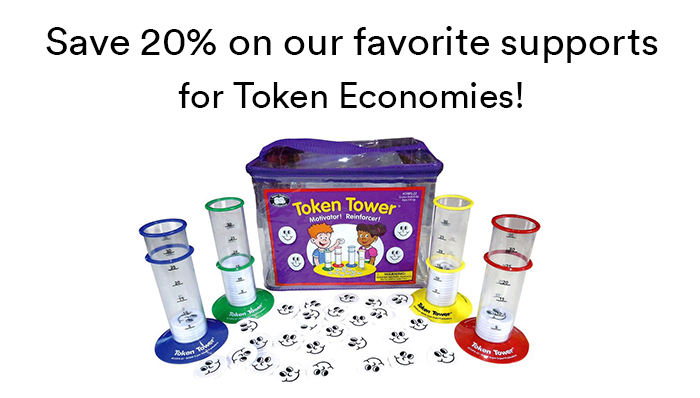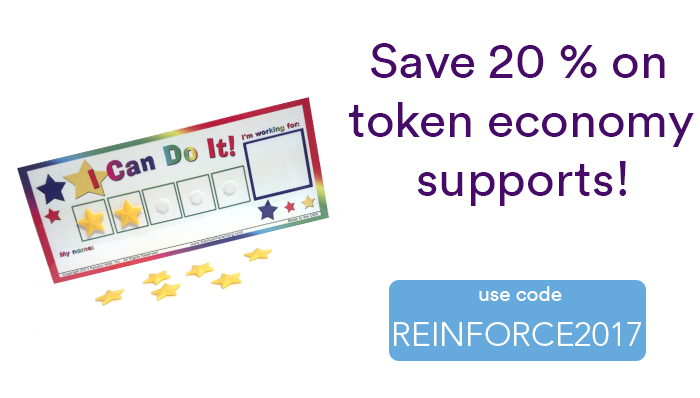I love token systems and use them frequently with my clients. Sometimes I use Velcro stars or stickers, or the Token Towers (which are great because you can hear the token going in the plastic tube.) It’s easy to vary the token system to fit the interests and age of a client I am working with. However, I see several errors in their use. Below are a few of the common ones:
• Inconsistent Use – The use of a token system should be predictable. When I am doing an ABA session, the token system is usually available throughout the session. But token systems may be specific to certain activities or certain environments. Using them only some of the time though doesn’t improve their effectiveness.
• Lack of Clarity – You should know what behavior you are focusing on for the token system. For example, I will write down for myself that I am providing tokens for a few specific behaviors (such as whenever a client responds correctly to a current learning target, when they remain in their seats for a period of five minutes, and when they greet a person who comes into the room.) It should be clear for you, as the person implementing the token system, what behaviors you are attempting to increase so you can provide tokens when those behaviors are exhibited.
• Lack of Differentiation – One of the things I love about token systems is that it allows me to easily differentiate reinforcement. For example, let’s say I’m working with a child to teach them to name items from different categories. Usually, when I ask them to name an animal, they name one animal and I provide a token for a correct response. But on this particular day, they name three animals. I can provide more than one token for the higher quality response.
• Not Allowing the Token System to Grow with the Child – Another benefit of token systems is that they can grow with the child. Once a child has mastered a certain behavior, I no longer include it in the token system. The child is always earning tokens for behaviors or responses that are difficult. If you have a client who has been receiving tokens for the same behavior for several months, then one of the two things is happening: (1) the client has mastered the behavior and you aren’t providing reinforcement for more challenging behaviors OR (2) the client has not mastered the behavior and for some reason your token system is not working. Either way, a change needs to be made.
• Fail to Provide a Motivating Reward – I have had some experiences in which the token was supposedly reinforcing on its own. In rare cases, this might just work. However, the tokens should be used to earn a known reinforcer for that particular client.
• Fail to Provide Choices in Rewards – There’s a great body of research on how choice improves motivation. Unfortunately, many children with developmental disabilities have fewer choices in their day-to-day lives than their typically developing counterparts. Allowing your client to choose from a selection of activities or toys for reinforcement will likely improve the quality of your token system.
WRITTEN BY SAM BLANCO, PhD, LBA, BCBA
Sam is an ABA provider for students ages 3-15 in NYC. Working in education for twelve years with students with Autism Spectrum Disorders and other developmental delays, Sam utilizes strategies for achieving a multitude of academic, behavior, and social goals. She is also an assistant professor in the ABA program at The Sage Colleges.




